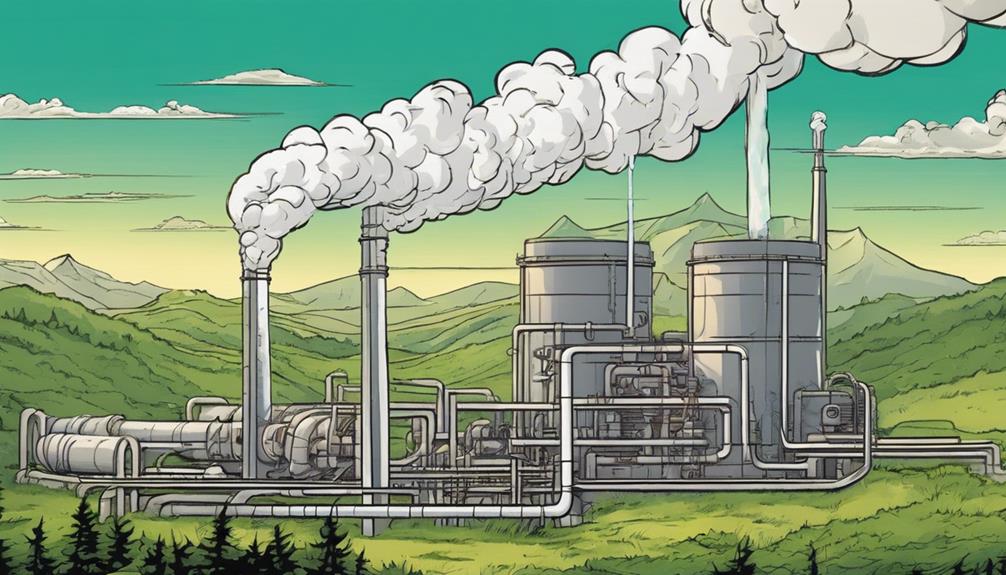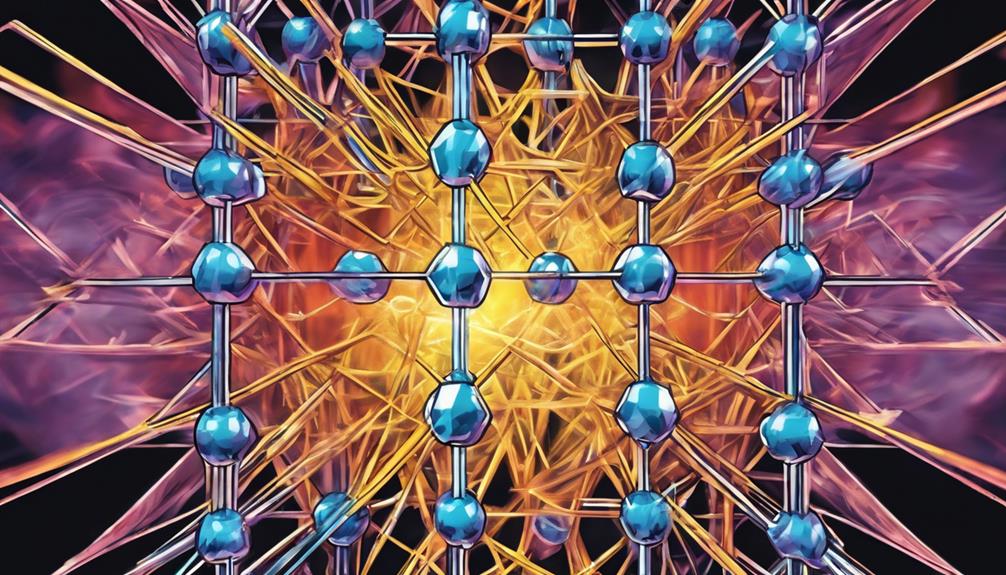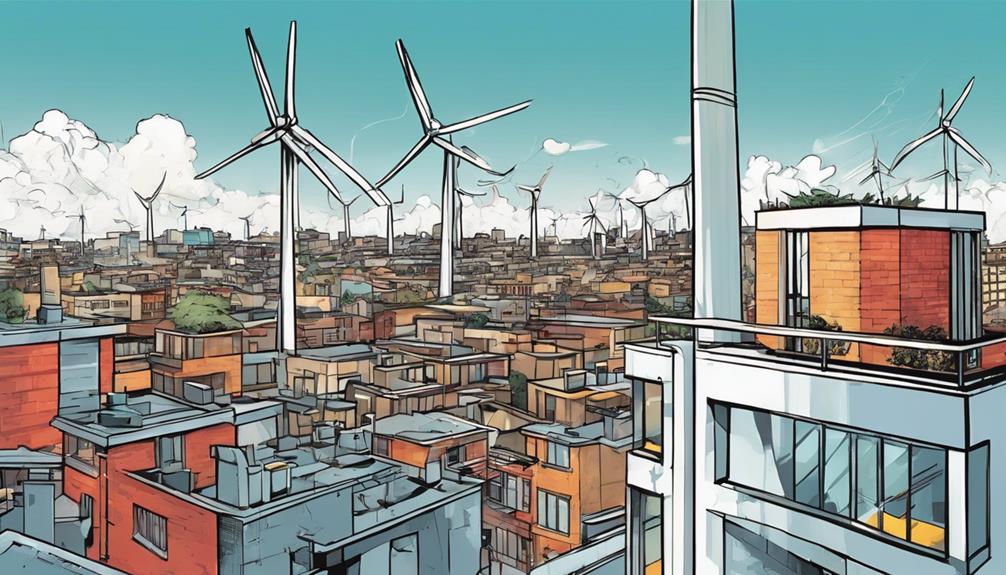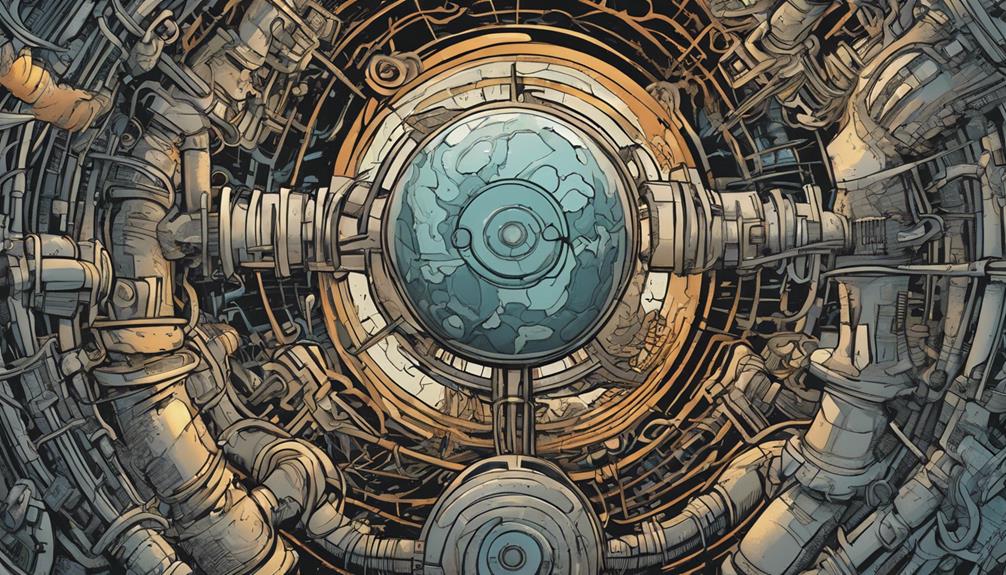When it comes to harnessing wind energy, I've found that understanding the critical wind speeds is pivotal. Turbines require a minimum of 7-10 mph to start generating electricity, and peak efficiency is achieved between 12 and 25 mph. The sweet spot for maximum power output is between 25-35 mph. But, wind speeds above 55 mph can damage turbines, and those below 7 mph result in minimal power generation. Want to know more about how wind speed affects turbine performance and what other factors come into play?
Key Takeaways
- Wind turbines require a minimum wind speed of 7-10 mph to start producing electricity, with peak efficiency between 12 and 25 mph.
- The best wind speed range for maximum power output is 25-35 mph, with turbines designed to operate efficiently within this range.
- Wind speeds above 55 mph can damage turbines, while speeds below 7 mph result in minimal power generation.
- Turbine design and blade structure influence the minimum wind speed required for power generation, affecting overall efficiency.
- Optimal wind speeds for power generation vary depending on turbine design, with some turbines capable of generating power at lower wind speeds.
Wind Speed Requirements

When it comes to generating power, wind turbines require a minimum wind speed of around 7-10 mph to start producing electricity, with peak efficiency typically achieved between 12 and 25 mph.
However, the best wind speed range for maximum power output is actually between 25-35 mph. It's worth noting that wind speeds above 55 mph can damage the turbines, while speeds below 7 mph result in minimal power generation.
Specific wind speed requirements can vary based on turbine design and manufacturer recommendations, but generally, most turbines start producing electricity at wind speeds around 6-9 mph. Understanding these wind speed requirements is essential for maximizing energy output and ensuring the efficient operation of wind turbines.
Factors Affecting Efficiency

I've discovered that several factors influence the effectiveness of wind turbines, including blade structure and length, wind turbine elevation, and maintenance. These components can greatly impact the operation of wind turbines, making them more or less efficient.
| Factors Influencing Effectiveness | Effect on Efficiency |
|---|---|
| Blade Structure and Length | Enhanced efficiency with ideal design |
| Wind Turbine Elevation | Increased heights boost power generation |
| Maintenance | Regular upkeep guarantees peak performance |
Appropriate location selection and wind direction also play a vital role in achieving maximum power output. Furthermore, turbine design influences the minimum wind speed necessary for power generation. Understanding these factors is crucial for optimizing wind turbine efficiency and maximizing energy output. By taking these aspects into account, wind turbines can function at their peak, delivering clean and renewable energy.
Environmental and Economic Impact

In addition to their ability to generate clean energy, wind turbines have a significant environmental and economic impact, making them an essential component of a sustainable future.
On the environmental front, wind turbines produce clean, renewable energy, reducing greenhouse gas emissions and contributing to global efforts to combat climate change. They also require minimal land use compared to traditional power plants, and wildlife impact mitigation strategies are in place.
From an economic standpoint, wind turbines create jobs in manufacturing, installation, and maintenance, boosting local economies in rural areas. They're cost-competitive with traditional energy sources, and financial incentives and tax credits are available. Long-term cost savings for energy consumers are another benefit, making wind turbines a win-win for the environment and the economy.
Wind Direction and Geography

As I consider the factors that impact wind turbine efficiency, I realize that wind direction and geographical factors play a significant role in determining the best location and performance of these turbines. Wind direction, in particular, affects the power generation efficiency of wind turbines. Factors like topography, surrounding buildings, and wind rose diagrams influence wind direction, which in turn impacts turbine performance.
| Wind Direction Impact | Geographical Factors Influence |
|---|---|
| Wind direction affects power generation efficiency | Elevation and terrain affect wind speed and turbine efficiency |
| Topography and obstacles impact wind direction and turbine performance | Nearby obstacles can disrupt wind flow and reduce turbine performance |
| Understanding wind direction is essential for maximizing energy output | Consideration of geographical factors is vital in determining wind turbine locations |
Advantages of Wind Turbines

Operating at high wind speeds, wind turbines offer several advantages, including increased torque at lower rotational speeds, better resistance against strong gusts of wind, and cost-effective clean energy production. As I explore the benefits of wind turbines, I'm struck by their ability to generate power efficiently.
They boast higher energy efficiency, which translates to long-term cost savings for energy consumers. What's more, wind turbines are designed to withstand a range of wind speeds, ensuring power generation during storms and high winds.
With safety protocols in place, maintenance becomes essential to guarantee turbines can operate safely in extreme conditions. Overall, wind turbines are an attractive option for clean energy, offering a winning combination of efficiency, cost-effectiveness, and reliability.
High Wind Speed Operation

I've observed wind turbines generate power during high winds and storms, but it's only possible with safety precautions in place to protect the turbines from damage. Regular maintenance is essential to guarantee the turbines can withstand extreme conditions. The specific wind speed requirements during storms vary based on turbine design, but safety protocols are necessary for turbine operation in high wind speeds.
| Wind Speed | Turbine Design | Safety Precautions |
|---|---|---|
| 25-35 mph | Standard | Regular maintenance, storm mode |
| 35-45 mph | Heavy-duty | Reinforced blades, anchor systems |
| 45-55 mph | Industrial | Advanced storm mode, emergency shutdown |
| Above 55 mph | Custom | Specialized design, enhanced safety protocols |
Turbine Design and Location

Turbine design and location play an important role in determining the minimum wind speed required for power generation, with different designs catering to specific wind speed ranges and locations influencing the overall efficiency of the turbines.
As I explore further into the world of wind turbines, I realize that the design of the turbine itself has a significant impact on its performance. For instance:
- Blade design and length impact efficiency, with longer blades capturing more wind energy.
- Wind turbine height influences power generation, with taller turbines accessing stronger winds.
- Maintenance and upkeep are essential for best efficiency, ensuring the turbine runs smoothly.
- Proper location selection enhances turbine efficiency, taking into account geographical factors like elevation and nearby obstacles.
- Turbine design influences the minimum wind speed for power generation, with some designs capable of generating power at lower speeds.
Frequently Asked Questions
Can Wind Turbines Operate Effectively in Urban Areas With High-Rise Buildings?
'I've wondered if wind turbines can thrive in urban areas with high-rise buildings. Honestly, it's challenging due to disrupted wind flows and turbulence from surrounding structures, making it difficult to achieve best wind speeds.'
How Do Wind Turbines Handle Changes in Air Density Due to Temperature?
I'm curious about how wind turbines adapt to air density changes due to temperature fluctuations. Since air density affects wind speed and turbine performance, turbines are designed to adjust blade pitch and yaw to optimize energy output.
Are Wind Turbines More Efficient in Cold Climates Than in Warm Climates?
"What a coincidence I was just wondering about this It turns out, wind turbines are more efficient in cold climates due to denser air, which increases power output, making them a great fit for chilly regions!"
Can Wind Turbines Be Used to Pump Water for Irrigation Purposes?
"I've explored the idea of using wind turbines to pump water for irrigation, and yes, it's feasible. The turbine's kinetic energy can be harnessed to power a pump, making it a sustainable solution for farmers."
Do Wind Turbines Produce Any Noise Pollution or Health Risks?
'I'm amazed that a single wind turbine can power over 1,400 homes Regarding noise pollution, wind turbines do produce some sound, but it's typically around 40 decibels, comparable to a whisper, and health risks are minimal.'
How Important are Essential Wind Speeds in the Functioning of Wind Turbine Power Generation?
Essential wind speeds play a crucial role in how wind turbine generators work. These speeds determine whether the turbine can generate enough power to be efficient. If the wind is too weak, the turbine won’t produce much electricity. Conversely, if the wind is too strong, the turbine may be at risk of damage.
Conclusion
As I conclude this exploration into the realm of wind turbine power generation, I'm struck by the irony – the very thing that fuels our quest for sustainable energy, wind, can also be the culprit behind inefficiencies.
Yet, it's this delicate dance between wind speed and energy output that makes wind turbines so captivating. By mastering this intricate relationship, we can reveal the full potential of wind energy and forge a cleaner, greener future.










